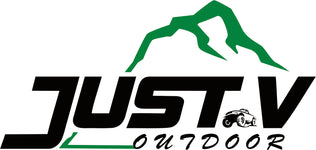
Essential Communication & Recovery Gear for Off Road Adventures
The thrill of venturing off-grid is undeniable, but it also brings the responsibility of ensuring you can communicate effectively and recover your vehicle safely if things go wrong. Whether you're tackling solo trails or leading a convoy, having the right communication tools and recovery gear isn't just about convenience – it's about safety and peace of mind.
The Importance of Communication on the Trail
Out on the trail, distances can be deceptive, and the roar of engines or the surrounding terrain can easily swallow your voice. Effective communication is vital for:
- Convoy Coordination: Keeping your group together, navigating obstacles, and alerting others to hazards.
- Spotting and Guidance: Communicating with spotters when navigating tricky sections.
- Emergency Situations: Calling for help or coordinating recovery efforts.
Essential Communication Tools for Off Roading
Relying solely on cell service is a gamble in many off-road locations. Here are some more reliable options:
- CB Radios (Citizen Band): A classic for a reason. CB radios offer relatively short-range, license-free communication and are widely used by the off-roading community. They're great for convoy communication and often allow you to connect with other drivers in the area.
- FRS/GMRS Radios (Family Radio Service/General Mobile Radio Service): These handheld radios offer shorter-range communication than CB but often have better sound quality and more channels. GMRS typically requires a license but allows for higher power output and longer range.
- Satellite Communicators (e.g., Garmin inReach, SPOT): For truly remote adventures where cell service is non-existent, satellite communicators are a game-changer. They allow you to send pre-set messages, custom text messages (depending on the device), share your location, and even trigger SOS alerts to emergency services via satellite. While they often involve a subscription fee, the safety they provide is invaluable.
- Mobile Signal Boosters: If you're venturing to areas with weak but present cell signals, a mobile signal booster can amplify the signal, allowing for calls and data use where it might otherwise be impossible.
Pro Tip: Test your communication equipment before heading out on a trip to ensure it's working correctly and that everyone in your group knows how to use it.
Getting Unstuck, Safely
We touched on basic recovery in a previous article, but let's delve deeper into the gear and techniques for getting your rig unstuck without causing further damage or injury.
- The Kinetic Recovery Rope (Snatch Strap): Unlike a tow strap, a kinetic recovery rope is designed to stretch and then snap back, using kinetic energy to help pull a stuck vehicle free. Using the right rope with the appropriate rating for your vehicle's weight is crucial.
- Tree Savers/Winch Extensions: If you're using a winch and need to anchor it to a tree, always use a tree saver strap to protect the tree from damage. Winch extensions provide extra reach if your winch cable isn't long enough.
- Snatch Blocks (Pulley Blocks): A snatch block can increase your winch's pulling power and change the direction of pull, allowing you to recover your vehicle from awkward angles. Understanding how to rig a snatch block correctly is essential for safe and effective use.
- High-Lift Jacks: While versatile, high-lift jacks can be dangerous if not used properly. They can be used for lifting a vehicle to change a tire or place recovery boards, but always use them on a stable surface and with extreme caution. Never put any part of your body under a vehicle supported only by a high-lift jack.
- Proper Attachment Points: Knowing the designated recovery points on your vehicle (usually clearly marked hooks or reinforced loops) is critical. Never attach recovery gear to suspension components or other weak points.
Essential for Safe Recovery
No matter how good your gear is, having a knowledgeable buddy and understanding safe recovery techniques are paramount.
- Never Recover Alone: Especially in challenging terrain, having another vehicle and experienced person can make a huge difference.
- Clear Communication During Recovery: Establish clear hand signals or use radios to communicate during the recovery process. Ensure everyone involved understands the plan.
- Inspect Your Gear: Before and after each use, thoroughly inspect your recovery straps, ropes, and shackles for any signs of wear or damage. Damaged gear can fail under load and cause serious injury.
- Consider Recovery Training: Taking a professional off-road recovery course can provide invaluable hands-on experience and teach you safe and effective techniques.
Staying connected and being prepared for vehicle recovery are fundamental aspects of responsible off-roading. By investing in the right communication tools and recovery gear, and by prioritizing knowledge and safe practices, you can minimize risks and ensure a more enjoyable and secure off-road experience for yourself and your fellow adventurers.
FAQs
Why is communication important when off-roading?
It's crucial for convoy coordination, spotting, and calling for help in emergencies, especially where cell service is poor.
What's the difference between a tow strap and a kinetic recovery rope?
A tow strap is for towing; a kinetic recovery rope stretches and uses energy to help pull a stuck vehicle free.
What's one crucial safety tip for vehicle recovery?
Never attempt to recover a vehicle alone. Always have another person and vehicle for assistance.
